Sheffield Doc/Fest 2019: Part 1: FOR SAMA, WAR OF ART, SEAHORSE & More
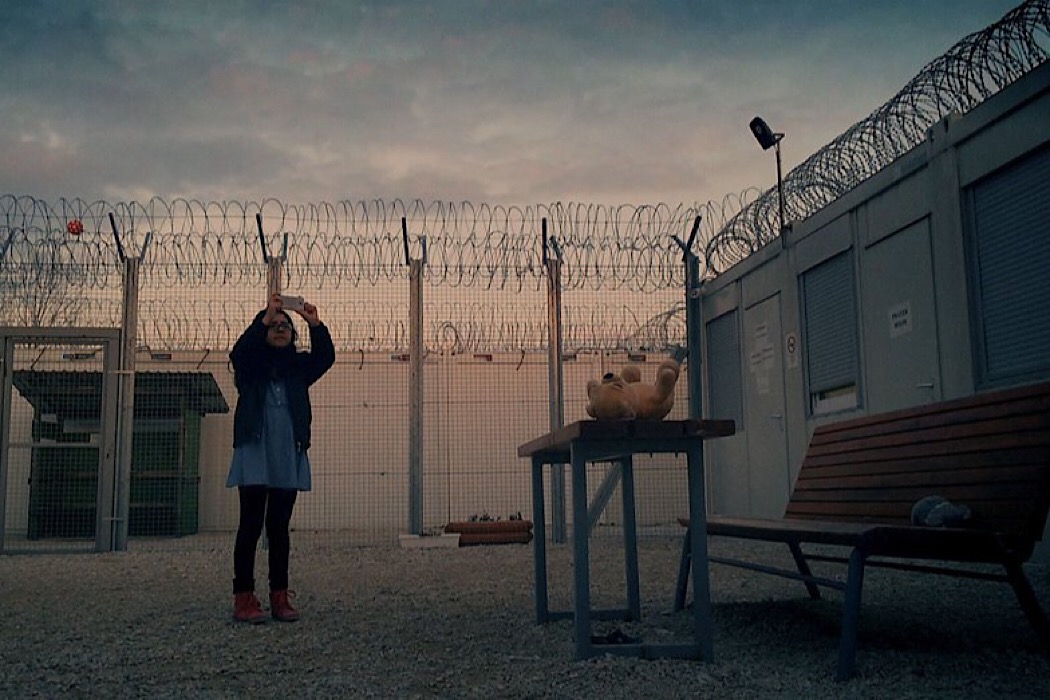
Musanna Ahmed is a freelance film critic writing for Film…
Sheffield Doc/Fest is one of my favourite times of the year. The intellectual, social and emotional stimulation it guarantees through films, talks, parties and alternate reality experiences, in the cosy city centre of Sheffield, is nonpareil. This year’s edition was another fantastic one, with a brilliantly curated selection of features across the festival, kicking off with Asif Kapadia’s latest film, Diego Maradona. Without further ado, here are my reviews from the first half of the festival, including one of the aforementioned opening night film.
Diego Maradona – Asif Kapadia
Diego Maradona’s life was tremendous and terrible, as summarised by his trainer Fernando Signoriri, but Asif Kapadia’s eponymous documentary on the football legend is simply tremendous.
A gripping history lesson taught with the same precision, honesty and detail of Kapadia’s other masterful docs, Senna and Amy, Diego Maradona focuses on the Argentinian’s life and career from the period of joining Napoli’s football club in the early 80’s to the end of his run there. In that time he became a legend and a myth – a playboy, a genius, a cheat, a saint, a gangster affiliate, a drug addict, a rebel, a hero.
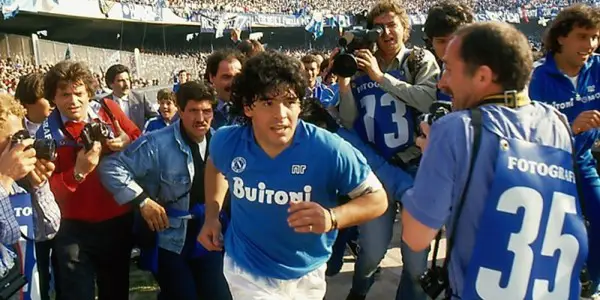
As opposed to the filmmaker’s previous docs on famous geniuses, his subject here is very much alive, thus allowing him to narrate his own life story, but Kapadia is relatively sparing on the use of voiceover this time. As a result, there are fewer contributors than expected – some of them include his invaluably giving trainer Signorini, football historian John Foot, who provides the necessary context, and Diego’s wife Claudia Villafañe, whose insight comes from being by his side for decades.
Excitingly structured as an action movie, the set pieces are the sequences of football (some of them are literally set pieces), wherein there’s a thrilling leitmotif that plays throughout whilst highlighting his most memorable moments on the pitch, in between various chapters of Maradona’s personal life including his ties to the Camorra and having an illegitimate child. The astonishing amount of archive footage on and off the field must have been an enormous challenge for Kapadia and his team to compile into a decently feature length documentary, but they do it with finesse – which is absolutely unsurprising to anyone familiar with the filmmaker’s work.
Possibly the most interesting thing to me about this documentary is that – more than any other media item I’ve engaged with about football – it vividly depicts the social and psychological effects on a player finding his second home. What he brings to S.S.C Napoli is unrivalled by any of his contemporaries, becoming a deity for the crowds there.
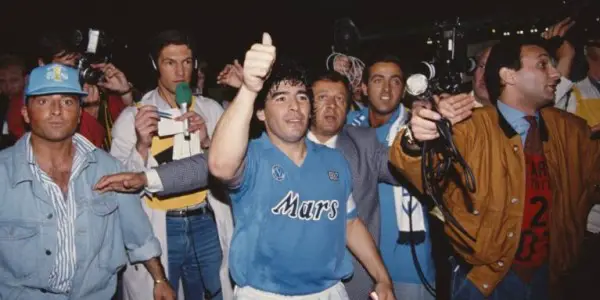
John Lennon claimed the Beatles were bigger than Jesus and was received with controversy – Maradona could have said the same thing without trouble if he wasn’t a man or faith or, more significantly, if it wasn’t affecting his psyche so much, prompting him to tell the club’s president that he wanted to move following their league victory. As the mania is so sharply captured, this film made me feel like I was a Napoli fan in the late 80’s experiencing the communal high.
Brilliantly depicting the two halves of his life – Diego, the cocaine-lover, the partygoer, the ladies man, and Maradona, arguably the greatest football player ever – Diego Maradona is not only a top-drawer treat for football fans but for anyone interested in strong character study, particularly of the brilliant Kapadia kind demonstrated in Senna and Amy. It’s the best opening night film at Sheffield Doc/Fest in years.
War of Art – Tommy Gulliksen
This is the rare film where the Western saviour fails. War of Art is a highly nuanced and awkwardly funny depiction of the cultural exchange between a group international artists and North Korea, set in the heat of a political moment, as two world leaders told each other they were ready to hit the nuclear button.
The DMZ Academy was an art project in 2017 created by Morten Traavik, who had the rare opportunity to be invited to North Korea and lead a symposium designed to inject contemporary art into the DPRK’s highly controlled culture. Norwegian filmmaker Tommy Gulliksen was able to chronicle the attempt for this documentary, which revolves around the frustrations of the seven artists and curators trying to work within the confines of censorship and experiencing culture clashes, condescension, and collective paranoia, all whilst the ground beneath them shakes during nuclear tests.
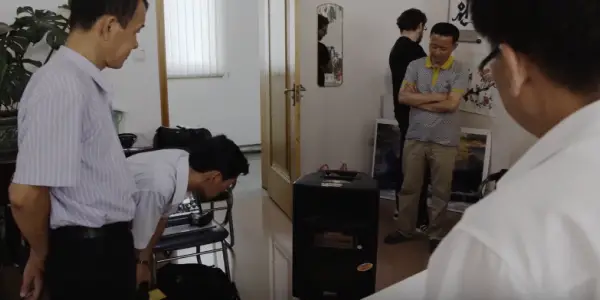
For the North Koreans, it seems that art exists only to educate or serve another explicitly political purpose, whereas these incoming artists are primarily about the process, originality and individuality. Of course, those things aren’t mutually exclusive – the sound artist creates a soundscape which enables audiences to listen to sounds of nature and animals that they won’t have ever heard before – but their ideas seem to be too subtle for the North Korean authorities, who are not only guides but also art deciders: the opinion is always “this is not art”.
There are several layers to this unique story, and one of the most enjoyable ones is the skewering of modern art, which is controversial because of how abstract or pretentious it can be, so it’s genuinely hysterical to listen to some of the more bizarre ideas get remorselessly and impolitely shut down, such as a proposal by a visual artist that involves a vial of his own blood.
Gulliksen and his crew are so good at understanding what’s valuable on camera, shooting almost a hundred percent unaffected observation shot at the right time and focusing on the right people, which enriches the picture especially because it’s a once-in-a-lifetime opportunity for them. That’s not only due to the political circumstances but also the initial point of the Western saviour failing, as this project proves to be largely unsuccessful in affecting the minds of the Koreans, therefore making this scenario unlikely to happen again.
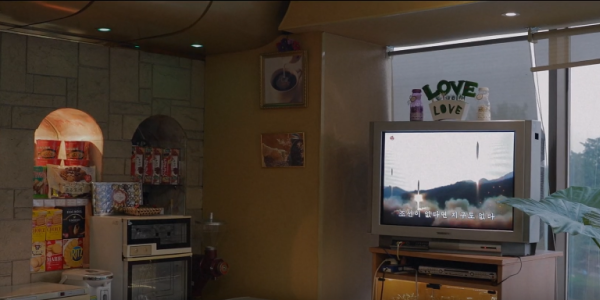
One of the great moments Gulliksen captures is a conversation between the group’s wrangler Mr Ham and Chinese photographer Quentin Shiu. We hear Ham express homophobic sentiments, stating that gay people don’t exist in the country due to education, but also speaking of how his countryfolk are raised to desire leaving strong personal legacies and being remembered by future generations rather than to chase materialistic dreams.
What this scene encapsulates is perhaps the worst and best insights into the average mindset of this totalitarian state, and the sad realisation is that it’s going to be impossible for them to become open-minded under the Kim dynasty, who see the outsider as the boogeyman due to the influence they could have on a citizen. War of Art is an astounding tragic comedy that we laugh along with until the idea of nuclear power becomes a sad source of pride and further exacerbates the potential of art making change. Highly thought-provoking stuff.
One Child Nation – Nanfu Wang
The word “important” and all its synonyms are overused when describing any film with social and political themes but One Child Nation truly merits all the adjectives.
When watching Nanfu Wang‘s cinematic essay on the truthful effects of the one child policy in China, I was reminded of the USA’s recently introduced anti-choice abortion laws and how they’ll affect children and adults in a similar way, despite being on the opposite end of the spectrum.

Supporters of those laws will recoil hearing of a midwife speaking of aborting and inducing 50,000 to 60,000 fetuses, but the glaring message of One Child Nation is that women should be making their own choices regarding their bodies.
This powerful document serves to preserve the country’s memory of the controversial policy, particularly when present-day China plasters its streets with propagandistic messages about the positives of having two children, ridiculously lacking self-awareness as they try to forget the past thirty-plus years.
Wang is intrigued mostly by the clash of the personal interest versus the national interest, and how the ingrained patriotism (largely generated through propaganda) successfully hypnotised everyone to buy into the strict policies without question.
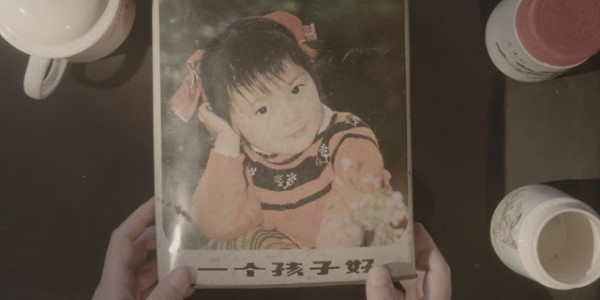
She lets us know that the country maintains that the policy was a success story, stating that the economy and strength of the nation flourished during this period, but her film lets us know that the human cost for it was staggering and horrifying. The images presented here never leave your mind or your heart.
Seahorse – Jeanie Finlay
I saw a documentary called A Deal With the Universe a few months ago, and it was similarly premised to Seahorse, following a transgender man’s difficult but successful efforts to carry a child. Jason Barker‘s film was entirely crafted from his own home videos whereas Seahorse on the other hand is a film by the acclaimed Jeanie Finlay, who isn’t trans herself but adeptly shares the story of Freddy McConnell with the broadest tact, particularly by avoiding Freddy’s deadname and not dwelling on the act of transitioning.
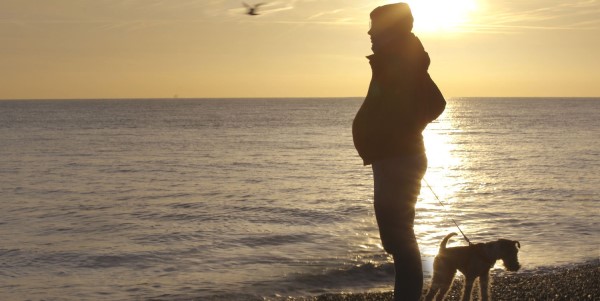
So many texts stop focusing on the life after – or walk a dangerous line by fetishising the act of transition – but Finlay is smarter than that and thus earns the full trust of her subject, who is always open with her. This project is a real collaborative effort; it’s clear that when the camera is in Freddy’s company, he can wear his heart on his sleeve, and the filmmaker is able to be present for very intimate times including when he gives birth.
The filmmaking is of an astute quality, one good scene after another, all parts of a deep portrait, with visual metaphors employed to augment an already compelling and deceptively simple story of pregnancy. Seahorse isn’t just about giving birth, it’s also about the fear of body dysphoria, how the effects of testosterone can change everything, and being situated within a family with mixed feelings to your personal circumstances. Devastating and uplifting.
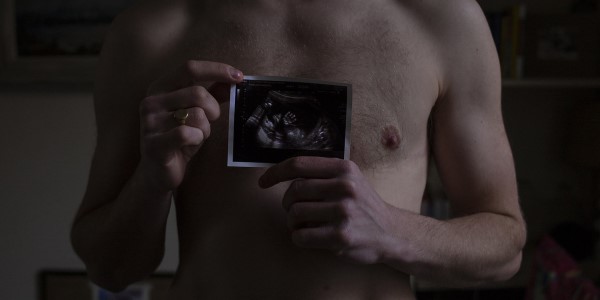
Don’t Be A Dick About It – Ben Mullinkosson
This story of brotherly love is an absolute charmer from start to finish.
Full of heart and crowd-pleasing joy, Don’t Be A Dick About It is a beautiful portrait of family and brotherhood with an infinitely lovable pair at the centre in Peter and Matthew Mullins. There’s not much to say to outline the narrative beyond the focus on their sibling dynamic, particularly because director Ben Mullinkosson doesn’t position this family in any grander place in the USA or the world, preferring for his film to purely be lighthearted suburban escapism.

He’s careful when navigating his camera around a neurodiverse character – who isn’t explicitly revealed to be autistic until towards the end – at the centre of his observation but luckily for him, Peter knows himself that he’s a very funny guy and adored by his family. Peter’s a Survivor obsessive who engages in his own take on the show called Peter’s World Adventure, where he votes on his family members to stay in a virtual game set in their large house.
His brother Matthew, on the other hand, faces a personal challenge of getting over a dog phobia, which his mother helps him overcome through activity in parks. A documentary filmmaker can never really know if something will come out of following such a particular thread of their subject’s life, but, providentially, Matthew shows growth over the period of filming. The best scenes are when Matthew and Peter are together – like many pairs of siblings, they fight and argue but ultimately love each other to bits.
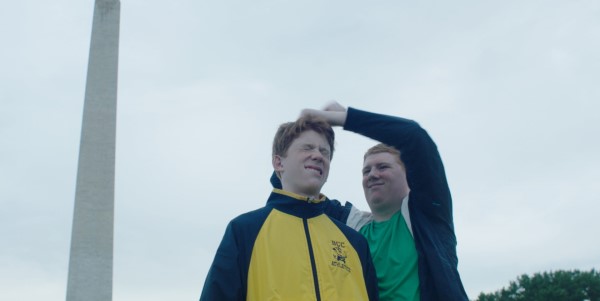
The only downside to the very sweet and very funny Don’t Be A Dick About It is that it’s fairly short, running at a brisk 69 minutes. I could spend a lot more time in the company of the delightful Mullins family.
For Sama – Waad Al-Kateab and Edward Watts
For Sama knocked the wind out of me and all those who caught it in Sheffield, and, soon, everybody else who will ever see it.
Many documentaries have been born out of the Syrian conflict, Some of these include Sheffield’s previous Grand Jury prize winner City of Ghosts, about the citizen journalists who make up Raqqa Is Being Slaughtered Silently, and the Oscar-nominated and winning docs Last Men in Aleppo and The White Helments, both profiling the titular volunteer organisation.
For Sama is a unique film, though, for it feels like the first one in some time to enter the public consciousness deeply and prompt us to pay attention, based on the immediate impact it’s having on audiences. Self-shot from the perspective of Waad Al-Kateab, who was a student at the University of Aleppo when she began recording footage of her daily life in the city, and soon gave birth to a daughter, Sama, for whom the film is a visual letter.
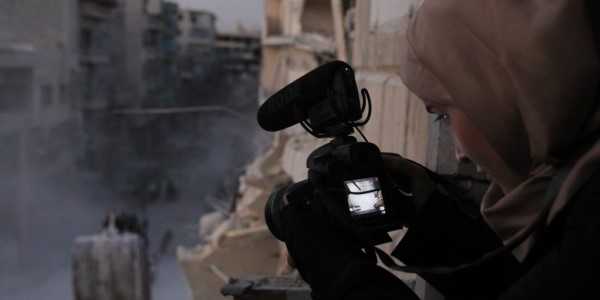
It’s extraordinary, harrowing, and extraordinarily harrowing, and the filmmaker had no idea the end result would even be a film – her intention was just to personally record the day-to-day experiences of herself and her friends whilst surviving in the war zone.
The remarkable reception For Sama has received in its short life so far – multiple standing ovations, top prize at Cannes, Q&A’s that typically begin with ‘what can we do to help?’ (the ideal instant response of a social doc) – could be credited to a number of things.
For one, this film is a condemnation of the international community for its failing response to Aleppo as much as it is an indictment of the Russian and Syrian governments and their reckless attempts to stop terrorism, which has left a disgustingly high body count and destruction of entire cities. How do those governments even begin to justify bombing eight out of nine hospitals in East Aleppo? They don’t, they won’t, they can’t.
As for the response from the outside, the appalling global efforts are evidenced in Waad’s work with Channel 4; she delivered footage of a daily life threatened by a ceaseless bombing campaign, presented matter-of-factly. These videos have been seen by millions of people yet the active efforts from many nations, including ours, remains muted.
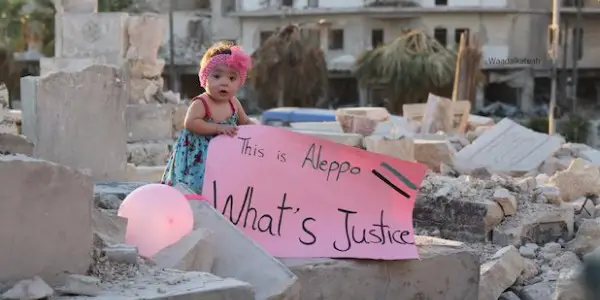
The story of love between Dr. Hamza and Waad is as much a part of the final film as is the actuality of life for Aleppo’s civilians. Relationships are key, because it’s people sticking together than can keep things from being completely bleak, and of course there’s the ability to help each other. A late montage that celebrates the beautiful relationships Waad established in her hometown is an absolute tearjerker, especially coming after the taut, harsh footage of blood, bodies and bombs falling.
For Sama is undoubtedly difficult to watch, but you cannot close your eyes when watching such an urgent film. An endlessly powerful and absolutely essential work, it’s a must-see when it is released this autumn.
Midnight Traveler – Hassan Fazili
A beautiful movie that marries the beautiful and the terrible, Midnight Traveler chronicles a family’s 3,500-mile journey on the road from the Middle East to the middle of Europe. It’s entirely shot on three smartphones.
Hassan Fazili is an Afghanistani filmmaker targeted by the Taliban, taking his family of four to seek refuge in Tajikistan. The difficult bureaucracy within seeking asylum means they’re deported back to Afghanistan, where they make a decision to leave, particularly after the threat is intensified after the lead actor from Hassan‘s short film is killed by the terrorists.
There’s not much to reveal the family’s financial circumstances but I’m led to believe that they’re not in a terrible position to be affording smugglers that cost a few thousand to help them continue their travels. I also believe that they are smart and economical with their resources, especially their use of the mobile device, and the result is a miracle of cinema, an epic narrative conceived out of shooting on just three mobile phones.
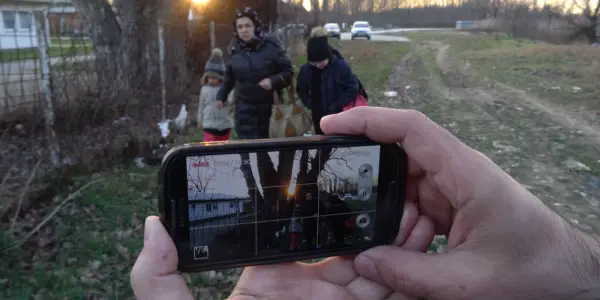
I took this recommendation from fellow writer Arlin Golden who saw it at SFFILM Fest, and I completely share his sentiments regarding this production – it’s possibly the only film shot on mobile that has a bigger purpose than aesthetics or economics. It’s the most noble use of a phone camera I’ve ever seen, showing that the device can be a significant tool for storytelling. The cellphone isn’t simply a surrogate for camcorders either, as Hassan uses the power of the selfie for profound personal moments, sharing the emotional connection between his wife, kids and fellow refugees.
Family members take turns to poetically narrate their journey, and one of the most remarkable moments in the film is a monologue about hating cinema, and how an addiction to recording can come at the expense of being in the heart of a dire circumstance. Sadly, there are many horrible circumstances along the way, including racism and prejudice faced in Europe by hooligans unsympathetic to the plight of migrants.
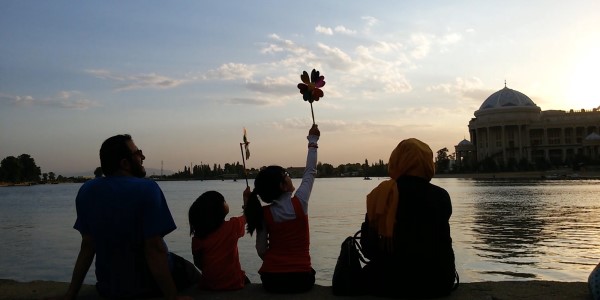
But, also, there are lots of lovely moments, like seeing his wife Nargis learning to ride a bicycle and watching his daughters have the time of their lives when playing in the snow. The kids have an endearing child-like interpretation of the scenario a la the kid in Room, like stating that they like the bottom bunk of a bed because “it has a roof over it”.
This is otherwise a downcast moment for the adults, who reflect on the hundreds of refugees that have passed through the same space, struggling to find a permanent home. Midnight Traveler marries the beautiful and the terrible, presenting a raw, poignant and eye-opening depiction of the refugee experience and succeeding as an incredibly canny achievement of filmmaking.
Stay tuned for Part 2 of my Doc/Fest coverage, which will include reviews of Midnight Family, Mike Wallace Is Here, The Amazing Johnathan Documentary, and more.
Does content like this matter to you?
Become a Member and support film journalism. Unlock access to all of Film Inquiry`s great articles. Join a community of like-minded readers who are passionate about cinema - get access to our private members Network, give back to independent filmmakers, and more.
Musanna Ahmed is a freelance film critic writing for Film Inquiry, The Movie Waffler and The Upcoming. His taste in film knows no boundaries.













